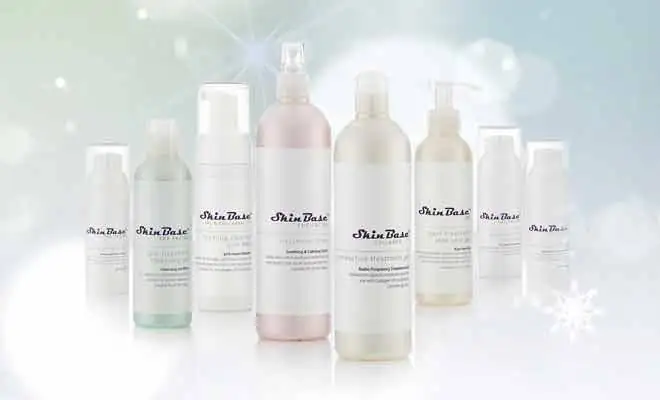Though collagen and elastin are commonly discussed when it comes to maintaining healthy, youthful skin, there is another naturally occurring ingredient that plays a big part. Hyaluronic acid (HA) is a superstar, and here’s everything you need to know.
What is Hyaluronic Acid?
Hyaluronic acid is a water-binding molecule, capable of holding up to 1000x its own weight. Despite its name, HA is not really an acid at all. In its true form, it has a pH level only slightly lower than neutral. So it is technically acidic, but you can think of it as a sugar molecule. HA has a thick consistency – similar to jelly – and fills up the space between collagen and elastin fibres. Where there are optimum hyaluronic acid levels, collagen within the skin can thrive and the skin itself can remain smooth, supple, and hydrated. Interestingly, almost 50% of the body’s HA content is in the skin, further proving why it is a must have ingredient. It can also be found in the eyes and joints, to help with lubrication.
What Should My Skincare Labels Say?
As a favourable skincare ingredient, don’t be surprised if Hyaluronic Acid appears on your labels as simply as that. However, it could also show up as ‘hyaluronan’ or even ‘sodium hyaluronate’ so keep an eye out for those too. These terms are generally interchangeable, so don’t worry which is present in your skincare. Sodium hyaluronate is worded slightly differently as it is simply the form that HA takes once water is added.
How Do I Use Hyaluronic Acid?
If you are using a topical HA product, such as a serum, you should use it directly after cleansing and toning. Preferably while your skin is still damp. After a few moments, you can lock it in by applying moisturiser on top. This is an important step, as dry air and low humidity can affect the way the serum works. If you do not apply a moisturiser and the HA can not pull water from the air, it will attract it from your skin instead. This will have the opposite affect than you intended, and dry out your skin. If your hyaluronic acid is in your moisturiser, as it is sometimes, you don’t have to worry about this. Simply apply as usual.
The Science Behind HA
So – why is hyaluronic acid so beneficial? Let’s take a look at the science. As a humectant molecule, hyaluronic acid resides in the epidermis between cells, and lures water into the skin. As well as enhanced hydration, HA has a range of positive effects, contributing to ingredient absorption, reduced inflammation, increased healing and communication between cells. Hyaluronic Acid is naturally produced in the body, therefore, it is safe for use and incredibly effective for all skin types – with no evidence of any side effects.
What Do I Need to Know About Molecular Size?
The molecular size of hyaluronic acid is important to understand so you know exactly how the ingredient is working for your skin. When HA has a high molecular weight, the particles do not penetrate the skin. Instead, they sit on the surface, attracting water and hydrating the outer layer. Hyaluronic acid with a low molecular weight has much smaller particles, capable of absorbing into the skin down to the stratum granulosum layer, to hydrate and plump from within. Any HA below the stratum granulosum (third layer of skin) is naturally synthesised by the body, as no topical product currently has the ability to penetrate that deep.
What Is The Lifespan of Hyaluronic Acid?
Despite its importance, HA has a lifespan within the body of less than 24 hours due to the natural turnover process of the skin. Approximately 30-50% of hyaluronic acid is broken down and replaced every 24 hours. In our 20s, metabolic activity within the body slows down, and hyaluronic acid production slows with it. Unfortunately, hyaluronidase levels (the enzyme that breaks down HA) remain consistent. Therefore, as we age, the body does not replace HA as quickly or completely as before. Sun damage and inflammation within the body also contribute to the degradation of hyaluronic acid within the body. When HA is lost, the plumpness, firmness and hydration of the skin are affected.
How Do I Boost HA Levels In My Skin?
As described, there are many detrimental effects of reduced levels of HA in the skin. Due to the short lifespan, continually boosting HA levels is vital in maintaining healthy skin. This can be done through topical products, such as serums and creams, oral supplements, and invasive or non-invasive skin treatments. We recommend using a method that encourages the production of HA within the skin, such as the SkinBase Collagen Lift Treatment.
SkinBase Collagen Lift
Collagen Lift is a non-invasive radio frequency treatment that uses heat to trigger fibroblasts to produce more hyaluronic acid, as well as collagen and elastin fibres. For clients in their 20s, the Collagen Lift treatment is perfect to maintain youthful skin and keep HA levels high. For those older, who may be experiencing the effects of reduced HA, the treatment will smooth, lift and firm. The radio frequency energy increases HA levels while reversing detrimental symptoms. Find out more about the Collagen Lift treatment here.

